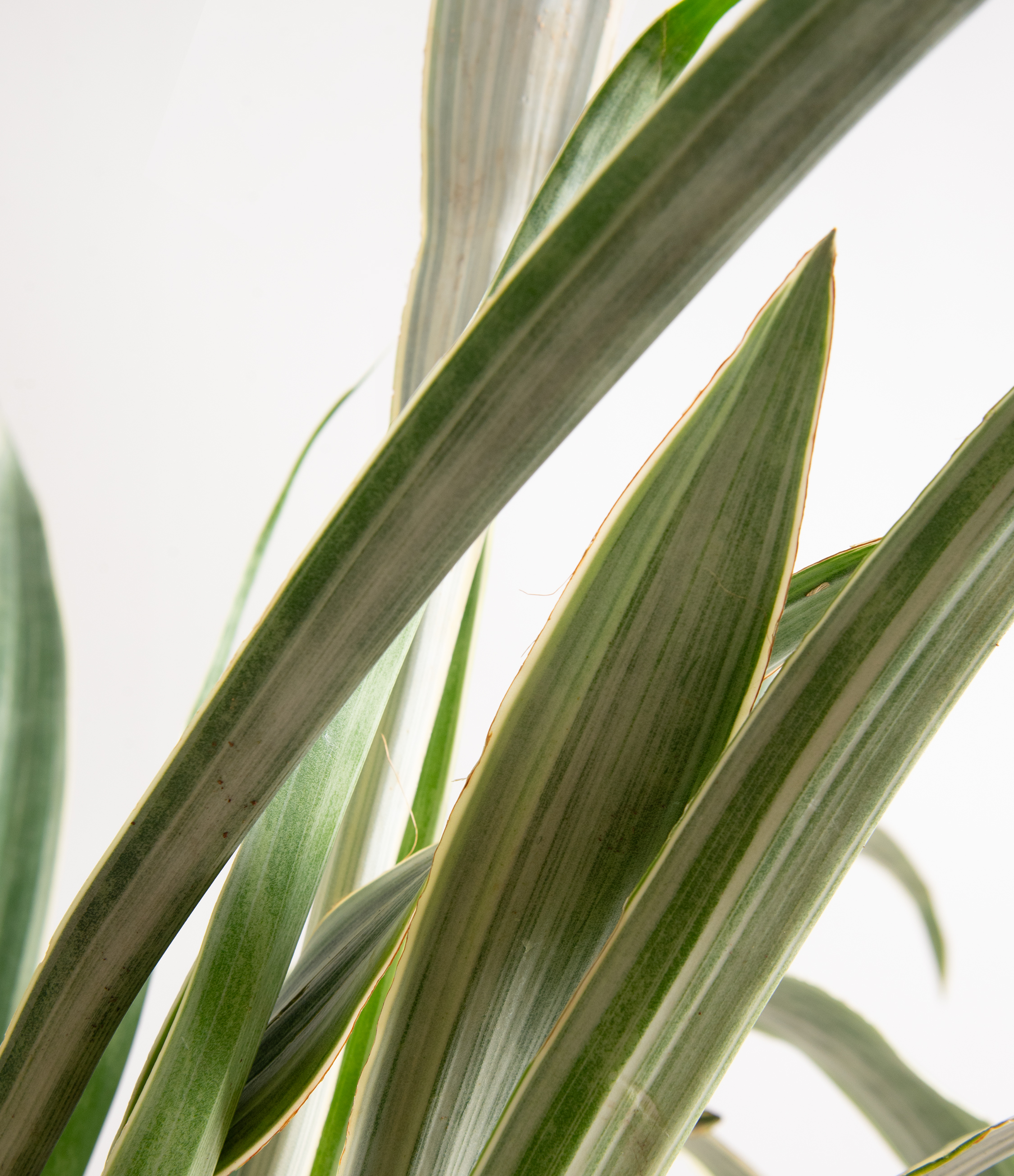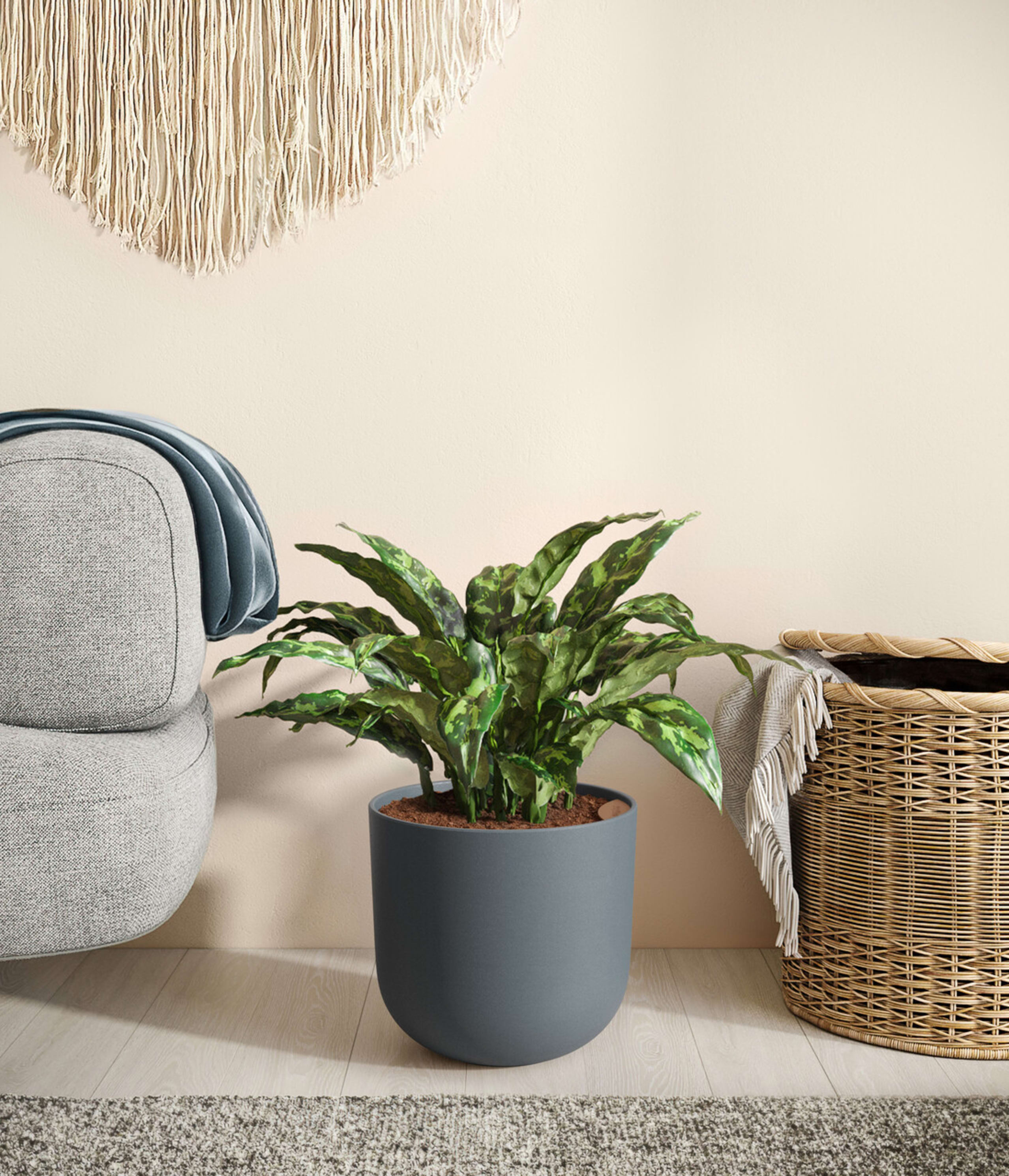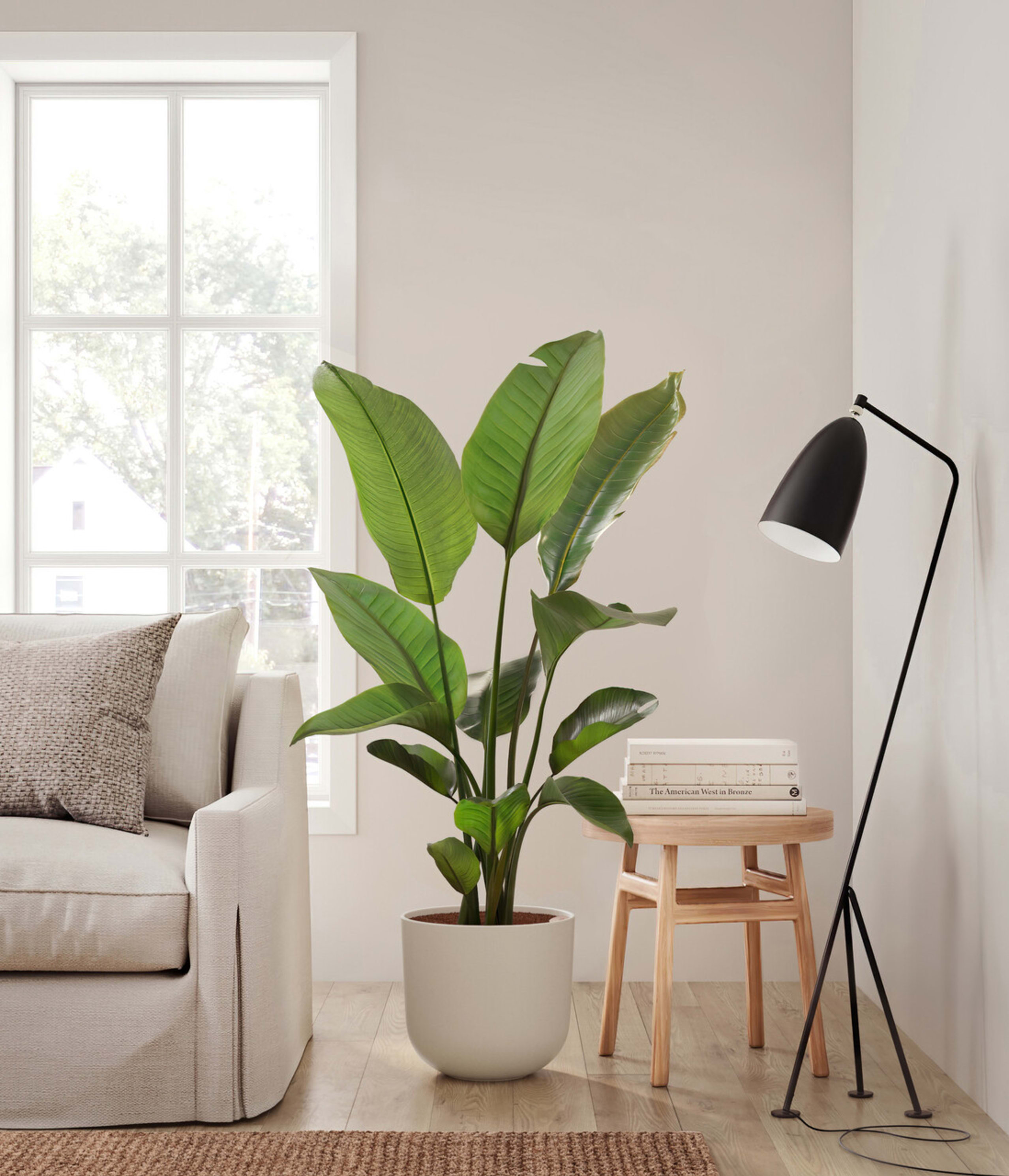How to Care for a Sansevieria Sayuri plant
About Sansevieria Sayuri
The Snake Plant Sayuri, a variant of the Sansevieria family, inherits its robustness and elegance from its cousins, the Green Snake Plant and the White Sansevieria. Known for its tall, narrow leaves with a gentle silver and sage hue set against a deeper green, the Snake Plant Sayuri stands out for its striking appearance. This plant is not only a visual delight but also serves as a powerful air purifier, making it a functional and attractive addition to any space.
Other common names
- Silver Sansevieria
- Sayuri Snake Plant
- Metallic Sansevieria
How Often Should I Water My Snake Plant Sayuri?
With easyplant, your Snake Plant Sayuri's care is straightforward. Make sure to check the easyplant reservoir once every two months and fill it when empty, and you're all set!
SansevieriaSayuri Light Needs
Sansevieria Sayuri grows best in a well lit space with medium to bright light and can adapt to low light or spaces without natural light as well.
deally, placing it near a south-east window will ensure it receives the right amount of light without the harshness of direct midday sun.
Sansevieria Sayuri Plant Care
Embodying the hardiness of the Sansevieria family, the Snake Plant Sayuri is a forgiving and robust plant. For optimal growth, give it a light dusting now and then and turn the pot a quarter every month. This simple routine keeps it growing evenly and looking its best.
How Big Do Sansevieria Sayuri Plants Grow?
The Snake Plant Sayuri typically grows at a moderate pace, about 4-12 inches per year. While it can reach impressive heights in ideal conditions, indoors, it's more common for it to attain a height of around 3-4 feet.
Temperature & Humidity
The Snake Plant Sayuri is adaptable to various indoor environments. While it enjoys warmth and tolerates a humidity range of 40% to 60%, it can also withstand lower humidity levels. To maintain optimal humidity, consider grouping it with other plants or using a pebble tray. Misting is not recommended, as it can lead to fungal issues on the leaves.
Are Sansevieria Sayuri plants Toxic for Pets & Kids?
Yes, like other Snake Plants, the Sansevieria Sayuri is moderately toxic when ingested. Keep it out of reach of curious kids and pets to prevent any accidents.
Troubleshooting Common Problems with Sansevieria Sayuri plants
Caring for your Sansevieria Sayuri is typically straightforward, but there may be times when your plant shows signs that it needs a little extra attention. It's quite normal and usually nothing to worry about. For instance, leggy growth in your Snake Plant Sayuri might be an indication that the plant is seeking more light. This is a normal response and not necessarily problematic. To promote more robust growth, you might consider moving the plant to a spot where it can enjoy more indirect sunlight. This simple relocation can often encourage denser and healthier foliage. If you notice black or yellow spots on the leaves or if the stems become mushy, these are signs that could be related to watering. If you’re using an easyplant, make sure not to overfill the water reservoir and make sure it’s empty before refilling. For those not using an easyplant pot, ensure that your watering schedule allows the soil to dry out between waterings. Additionally, relocating the plant to a brighter spot can be beneficial as it may improve water consumption and overall plant health. By keeping an eye on these simple aspects of care, your Sansevieria Sayuri should continue to thrive, enhancing your space with its striking appearance and air-purifying benefits. Remember, with a little attention and adjustment, Sansevieria Sayuri is a resilient and long-lasting addition to any indoor garden.
Frequently Asked Questions about Sansevieria Sayuri Plant
- Can Sansevieria Sayuri help improve air quality?
Absolutely! Snake Plant Sayuri is known for its air-purifying properties. It removes toxins and allergens from the air, making it a great choice for improving indoor air quality.
- Do Sansevieria Sayuri plants need direct sunlight to grow?
Snake Plant Sayuri does not require direct sunlight to thrive. It can grow in a wide range of lighting conditions, from bright light to low light. However, keep in mind that extremely dark conditions may slow its growth, while brighter light can accelerate it. It's important to avoid placing the plant in direct sunlight, as it can burn the foliage.
- Is a Snake Plant Sayuri easy to take care of?
Yes, Snake Plant Sayuri is among the easiest houseplants to care for. These plants are highly forgiving and require minimal maintenance. They are especially easy to manage with an easyplant pot, making them perfect for beginners or those with a busy lifestyle.
- How do I know if my Snake Plant Sayuri needs water?
With an easyplant pot, watering is simplified. Check the water reservoir every two months and fill when empty. Without an easyplant pot, water the plant when the soil is completely dry, typically every 2-3 weeks.
- What should I do if the leaves of my Snake Plant Sayuri start drooping?
Drooping leaves can be a sign of overwatering or insufficient light. Ensure the plant is not sitting in water and move it to a brighter location if necessary. Remember, the Snake Plant Sayuri is quite resilient and should recover quickly once the issue is addressed.
- Can I propagate my Sansevieria Sayuri?
Yes, Snake Plant Sayuri can be easily propagated. You can do this by dividing the plant during repotting or by rooting leaf cuttings in water or soil.

 Small Plants
Small Plants Medium Plants
Medium Plants Plants Collections
Plants Collections Large Plants
Large Plants Huge Plants
Huge Plants